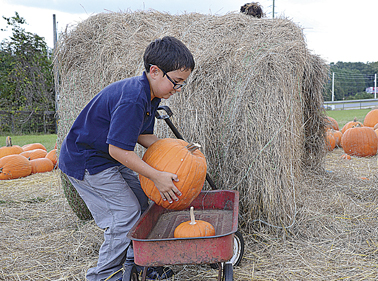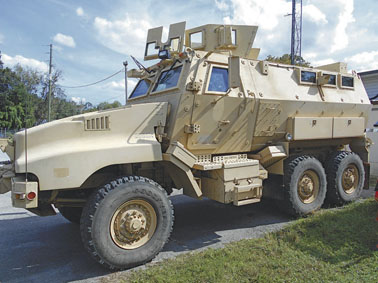HIGH SPRINGS – Residents may soon begin to notice improvements to the city’s playgrounds. New mulch and barriers have been delivered and are just about ready for installation, said City Manager Ed Booth.
The labor needed to install new items at city playgrounds, prepare the water plant for painting, pull weeds and provide general maintenance to the community are being provided by community service personnel.
While the city has a contract for mowing ball fields and city property twice a month, the city manager has had to find creative ways to improve the ball fields and get additional work accomplished to properly maintain city grounds and buildings, Booth said.
“The city just does not have the money in the budget to do everything that needs to be done to maintain our property in a safe condition,” he said.
Booth made an inspection of all of the city’s property when he first joined the staff in late 2012.
“Some of the items I found were scary,” he said. “I had to shut down one playground immediately due to potentially unsafe conditions.” The playground is now up to code, Booth said.
This year’s budget included funds for materials to improve the playgrounds, but not the manpower to do it.
“As I was formulating the budget, I started looking for alternative ways to get the work done,” Booth said. Community service personnel turned out to be the answer for free labor, he said.
The county court system was looking for jobs for those people who worked full-time, but still needed to complete community service hours. Using standby personnel from public works to supervise six to 12 community service workers on Sundays, the city has received the benefit of the extra labor, Booth said.
In another example of how the city is finding cheap or free ways to maintain its property, Booth said he came up with the idea to grow sod on the city’s spray field. As part of Booth’s earlier survey of city-owned property, he realized the city’s ball fields needed to have sod replaced.
Booth located a sod grower and made an arrangement to have sod grown on the spray field by his company in exchange for three acres of free sod for city recreation areas.
“It was a win-win situation for both of us,” he said. “We got the sod we needed, and they got free land and watering for their portion of the sod, which they could then sell.”
Growing sod on a spray field also removes some of the nitrates that build up and would eventually cause the city to have to locate another site, he said.
“Growing sod helps us to use our resources wisely and extend the life of our spray field a few more years,” Booth said. “Everybody benefits from this arrangement.”
# # #
Email cwalker@
alachuatoday.com
Add a comment


 HIGH SPRINGS – In a hurricane or other serious emergency, the High Springs Police Department (HSPD) is now able to reach stranded travelers, ride over flooded streets, remove or run over fallen trees and reach people in difficult to access locations, with the help of a donation from the United States Department of Defense (DOD).
HIGH SPRINGS – In a hurricane or other serious emergency, the High Springs Police Department (HSPD) is now able to reach stranded travelers, ride over flooded streets, remove or run over fallen trees and reach people in difficult to access locations, with the help of a donation from the United States Department of Defense (DOD). 